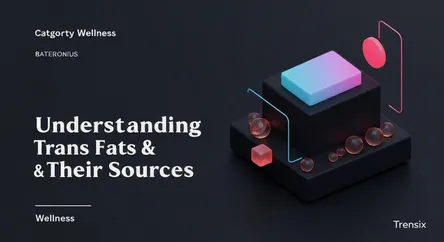Wellness
Understanding Trans Fats & Their Sources

Discover what trans fats are, where they are commonly found, and why they are widely considered the worst type of fat for your health.
What is it?
Trans fat is a type of unsaturated fat. While small amounts occur naturally in some meat and dairy products, the primary concern is artificial trans fats. These are created industrially by adding hydrogen to liquid vegetable oil, a process called partial hydrogenation. This makes the oil solid at room temperature, increasing the shelf life and stability of foods. Common sources of artificial trans fats include fried foods like french fries and doughnuts, baked goods such as cookies and cakes, stick margarine, shortening, and many processed snack foods like microwave popcorn.
Why is it trending?
Global health authorities have taken significant action against trans fats, keeping them in the public health spotlight. The World Health Organization (WHO) has called for the elimination of industrially-produced trans fats from the global food supply, attributing hundreds of thousands of deaths to them annually. In the United States, the FDA has banned food manufacturers from adding partially hydrogenated oils to foods. This widespread regulatory action and growing public awareness of their severe health consequences ensure trans fats remain a trending topic in nutrition.
How does it affect people?
Trans fats are widely considered the worst type of fat for your health. They negatively impact cholesterol levels by raising "bad" LDL cholesterol while simultaneously lowering "good" HDL cholesterol. This combination significantly increases the risk of developing cardiovascular diseases, including heart attacks and stroke. High consumption of trans fats is also linked to an increased risk of developing type 2 diabetes, systemic inflammation, and a higher risk of death from any cause. Your body does not need or benefit from trans fats.